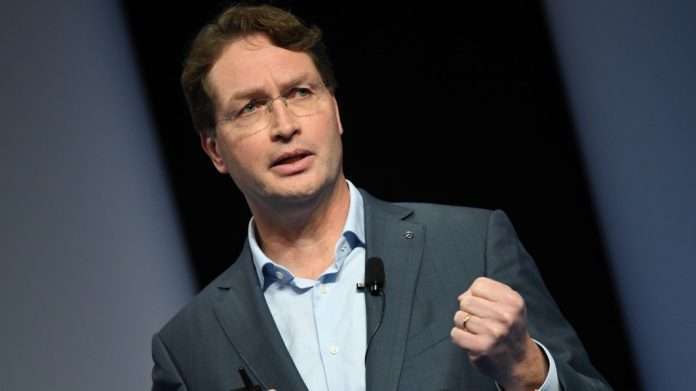Mercedes-Benz CEO Ola Kaellenius has revealed that the company’s upcoming electric vehicle (EV) architecture, set to debut in the form of the CLA compact electric sedan in late 2025, will aim to achieve 30% to 35% more driving range per kilowatt-hour of energy stored in the battery compared to their current EV models. In addition, Kaellenius mentioned that the new CLA lineup will include a lithium-iron-phosphate battery, a first for any Mercedes EV.
Using lithium iron phosphate (LFP) batteries in the CLA range will enable to offer a more affordable EV models. Targeting a highly competitive segment predominantly led by Tesla. In China, where LFP batteries are commonly used by Chinese EV brands, the new CLA will also face competition.
Mercedes intends to provide a glimpse of the future electric CLA by unveiling a prototype at the IAA auto show in Munich, Germany on Sunday. This prototype will showcase Mercedes’ strategy to bridge the technology gap between them and Tesla, as well as other new EV manufacturers.
The primary focus of Mercedes future EV development
Is increasing driving range while minimizing energy consumption. According to Kaellenius, “Efficiency is really the new currency when we go into electric vehicles.” The new CLA is expected to achieve a power consumption of 12 kWh per 100 kilometers and offer a driving range of 750 km, which surpasses the 17 to 18 kWh per 100 km consumption rate of Mercedes’ current EQA 350 compact SUV model.
To put this into perspective, a Tesla Model 3 has a power consumption of 13.1 kWh per 100 km. With such efficiency levels, the future CLA aims to be the electric equivalent of a car that consumes only one liter of gasoline per 100 km of driving. This concept, known as the “one-liter car,” has long been a sought after goal for European automakers. Only Volkswagen’s diesel electric XL1 being the successful attempt, albeit with only 200 units sold.
Key Importance In the EV market
Driving range remains a crucial competitive factor, consumers can compare maximum distance before needing to be recharged. For manufacturers, the real competition is designing vehicles that offer greater driving range with a smaller, cheaper battery pack. Reducing battery costs is critical as other EV brands engage in a price war to sustain sales growth.
Kaellenius emphasized that when it comes to the efficiency of an electric car, the entire system must be optimized. Mercedes faces the additional challenge of offsetting the power consumption of high-powered Nvidia chips. These control driver assistance features, large infotainment screens, and other systems in the CLA and future EVs.
To improve EV efficiency, Mercedes engineers conducted extensive testing using a prototype vehicle called the Vision EQXX. This vehicle demonstrated an impressive power consumption rate as low as 8.3 kWh per 100 km. According to Kaellenius, for the Vision EQXX, “we gave the engineers no limits.”
However, the production version of the CLA will face certain limitations imposed by customer demands and the competitive pricing strategies set by rival automakers in an increasingly crowded EV market.
Auto News
http://54.169.179.54/2023-mercedes-glc-review-uneasy-controls-undermine-appeal/
